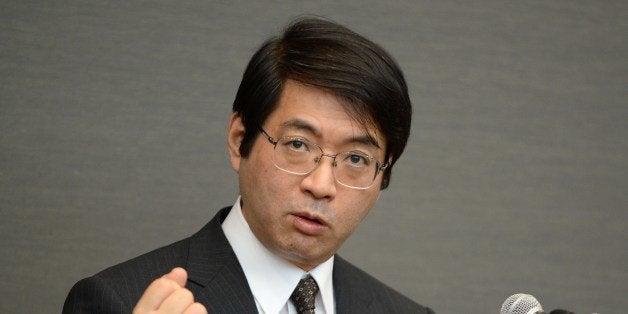
A note left behind by a Japanese stem-cell researcher before he took his own life blames the storm of media attention around the retraction of two papers for his suicide, a lawyer working for his family said in a press conference.
In the days following the tragic death of Yoshiki Sasai on 5 August, scientists, journalists, and bloggers in Japan have been speculating about the reasons behind it. Yoshiki Sasai, a 52-year-old world-renowned stem cell scientist at the RIKEN Center for Developmental Biology (CDB) in Kobe, had recently been entangled in a controversy over two papers he co-authored. The papers were published in Nature in January but then retracted in July.
At a press conference on 12 August, Kazuhiro Nakamura, a lawyer representing Sasai’s family, summarized contents of the suicide note left by Sasai to his family. In it Sasai said he was “worn out by the unjust bashing in the mass media and the responsibility he felt towards RIKEN and his laboratory”. Nakamura would not release a full version of the note, citing Sasai’s wishes and concern for Sasai’s family.
The two papers described a method for converting mouse bodily cells to embryonic like state by stressing them, for example, by immersion in acid, a method known as stimulus-triggered acquisition of pluripotency, or STAP. Duplicated and manipulated images were soon found in the papers. A RIKEN internal investigation committee found Obokata guilty of scientific misconduct (see the special collection 'The rise and fall of STAP').
The internal committee found Sasai to hold “grave responsibility” for failure of oversight but concluded he was innocent of any direct involvement with the problematic data.
But, in the months after publication, Sasai was hammered in the Japanese media with people reflecting on his responsibility for the papers and delving into his personal life. Many articles made unsubstantiated claims about his motivations, including one article in the 17 April issue of the Shukan Bunshun that tied Sasai’s involvement with the STAP research to heartbreak he experienced at university.
But it wasn’t just the tabloids that were making unsubstantiated claims about Sasai. In June, an independent RIKEN Reform Committee, tasked with preventing misconduct in the future, released a report that criticized the CDB leaders, especially Masatoshi Takeichi and Sasai, the deputy director, for being so motivated by the desire to eclipse iPS cells technology that they skipped standard recruitment procedures when hiring Obokata.
They also accused Sasai of orchestrating a media blitz that included her wearing an apron given to her by her grandmother to a press conference. It also “surmised” that Sasai was motivated by the lure of grants in pursuing STAP.
Takeichi and Sasai objected to numerous points in the report, including the three aforementioned. The committee did not interview Sasai — or anyone else at the CDB aside from Takeichi — before reaching conclusions about the motivations that drove Sasai. The report itself lacked an explanation for most of the accusations. Nonetheless, it recommended that the CDB be dismantled.
In June, in response to queries from a Nature reporter (note: Nature’s news and comment team is editorially independent of its research editorial team) to various committee members, Nakamura forwarded a note from “the RIKEN Reform committee” stating that the committee would not respond, in an attempt to “avoid any unnecessary confusions and/or misunderstanding”. It also said the committee had disbanded and thus no one could comment.
University of Tokyo emeritus professor Teruo Kishi, who led the committee, has been commenting elsewhere in the Japanese press, however. In the wake of the suicide, he said Sasai’s death could have been avoided if RIKEN had acted more quickly on his committee's recommendations. “The key thing is speed,” he said. “By waiting, criticism in the mass media increases, and it has the opposite effect.”
According to Nakamura’s summary of the causes of the suicide, it was the committee’s recommendation to dismantle the CDB in June, not RIKEN’s slowness in doing so, that “gave Sasai a tremendous shock”.
Kishi says he hopes that “the dismantlement of the CDB, through an even greater reform than the one recommended by the reform committee, would catapult RIKEN to a world-leading position”.
Developmental and stem-cell biologists think the CDB already occupies that position, leading to a flood of international support for the CDB since June. Maria Leptin, a molecular biologist and director of the European Molecular Biology Organisation in Heidelberg, Germany, said at the time that the committee’s proposals for the CDB “may even be more damaging than the incident itself”.
While RIKEN still deliberates over CDB’s fate, many are still trying to come to grips with Sasai’s death — his family more than anyone else. At the 12 August press conference, Nakamura also released a statement from Sasai’s family: “We feel crushed by a deep sorrow. This last six months have been too long, and we too are worn out. We see nothing but despair.” The note goes on to wish the CDB members all the best in returning to an environment in which they can do research. It ends with a plea for their privacy to be respected.
This story originally appeared in Nature News.
